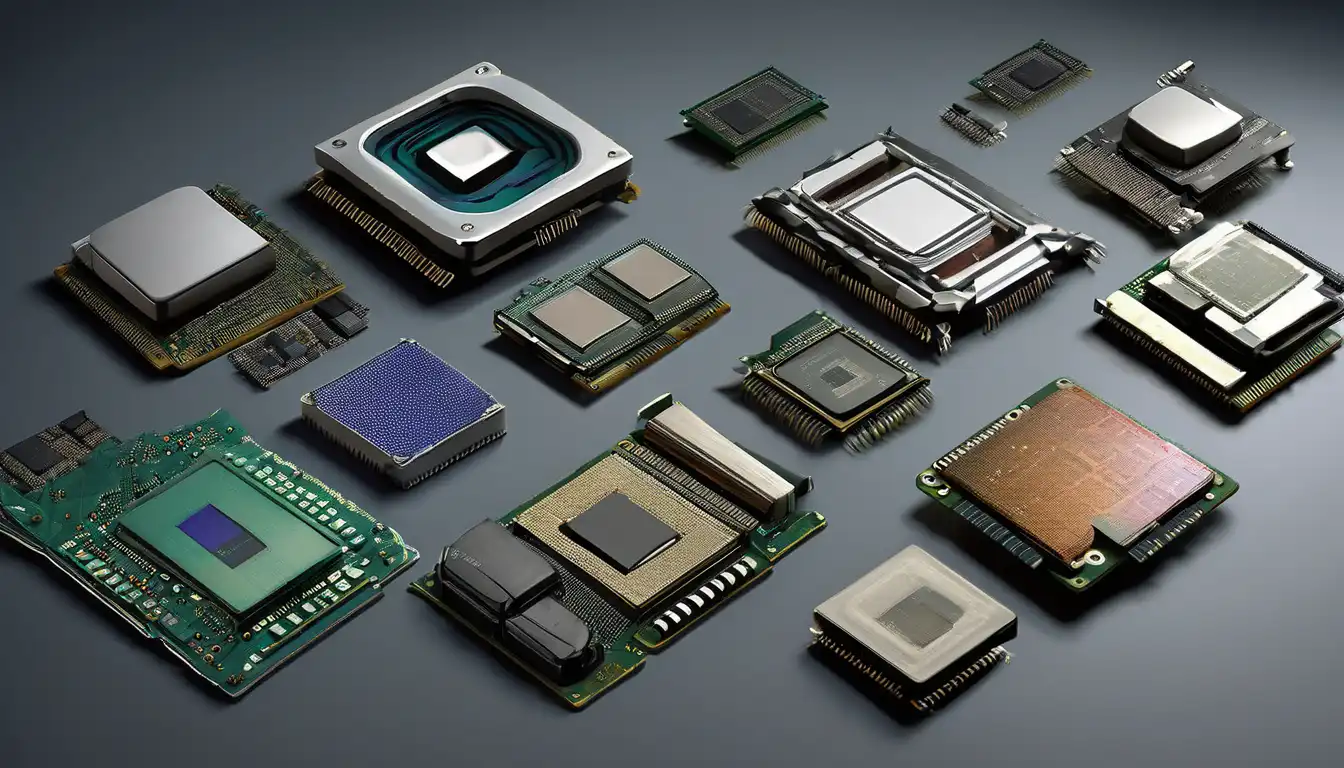The Dawn of Computing: Early Processor Beginnings
The evolution of computer processors represents one of the most remarkable technological journeys in human history. Beginning with primitive vacuum tube systems in the 1940s, processors have undergone revolutionary transformations that have fundamentally changed how we live, work, and communicate. The first electronic computers, such as ENIAC, utilized thousands of vacuum tubes to perform basic calculations, occupying entire rooms while offering processing power that modern smartphones surpass millions of times over.
These early processors operated at speeds measured in kilohertz and required massive amounts of electricity and cooling systems. The transition from mechanical to electronic computing marked the first major milestone in processor evolution, setting the stage for the rapid advancements that would follow throughout the decades.
The Transistor Revolution: 1950s-1960s
The invention of the transistor in 1947 by Bell Labs scientists John Bardeen, Walter Brattain, and William Shockley marked a pivotal moment in processor development. Transistors replaced bulky vacuum tubes, offering smaller size, lower power consumption, greater reliability, and faster switching speeds. By the late 1950s, transistors had become the fundamental building blocks of computer processors.
During this period, processors evolved from discrete transistor designs to early integrated circuits. IBM's System/360 family, introduced in 1964, represented a major advancement with its compatible architecture across different models. Processor speeds increased to the megahertz range, while memory capacity expanded significantly. The development of assembly languages and early high-level programming languages like FORTRAN and COBOL enabled more efficient processor utilization.
The Integrated Circuit Era: 1970s Breakthroughs
The 1970s witnessed the rise of microprocessors, with Intel's 4004 chip in 1971 marking the beginning of the modern processor era. This 4-bit processor contained 2,300 transistors and operated at 740 kHz, demonstrating that complete central processing units could be manufactured on a single chip. The subsequent Intel 8008 and 8080 processors established the foundation for personal computing.
Key developments during this decade included:
- The introduction of 8-bit and 16-bit architectures
- Development of microprocessor families with backward compatibility
- Emergence of reduced instruction set computing (RISC) concepts
- Advancements in semiconductor manufacturing processes
These innovations paved the way for the personal computer revolution that would transform computing from an enterprise-only technology to a household commodity.
The Personal Computing Boom: 1980s-1990s
The 1980s and 1990s represented the golden age of processor innovation, driven by intense competition between manufacturers. Intel's x86 architecture became the industry standard, with processors like the 80286, 80386, and 80486 introducing protected mode, 32-bit processing, and math coprocessor integration. Clock speeds escalated from 5 MHz to over 100 MHz during this period.
Major milestones included the introduction of RISC architectures like ARM, which would later dominate mobile computing. The 1990s saw the emergence of superscalar architectures, out-of-order execution, and the integration of multimedia extensions like MMX. Processor manufacturers began emphasizing performance per watt and thermal management as clock speeds approached physical limits.
The Multi-Core Revolution: 2000s-Present
As single-core processors approached thermal and frequency barriers in the early 2000s, the industry shifted toward multi-core designs. Intel and AMD introduced dual-core processors around 2005, followed by quad-core, hexa-core, and eventually processors with dozens of cores. This parallel processing approach enabled continued performance improvements while managing power consumption and heat generation.
Modern processors incorporate sophisticated features such as:
- Simultaneous multithreading (Hyper-Threading)
- Advanced power management technologies
- Integrated graphics processing units
- Hardware virtualization support
- AI acceleration capabilities
The transition to smaller manufacturing processes, from 90nm to current 3nm and smaller nodes, has enabled billions of transistors on single chips while improving energy efficiency.
Specialized Processors and Heterogeneous Computing
Recent years have seen the rise of specialized processors designed for specific workloads. Graphics Processing Units (GPUs) have evolved from simple rendering engines to powerful parallel processors capable of handling scientific computing, artificial intelligence, and cryptocurrency mining. Field-Programmable Gate Arrays (FPGAs) offer customizable hardware acceleration, while Application-Specific Integrated Circuits (ASICs) provide optimized performance for particular tasks.
The emergence of heterogeneous computing architectures combines different processor types on single platforms. Apple's M-series chips integrate CPU, GPU, and neural engine components, while AMD's accelerated processing units combine CPU and GPU cores. This approach maximizes performance and efficiency for diverse computing workloads.
Future Directions: Quantum and Neuromorphic Computing
The future of processor evolution points toward revolutionary paradigms beyond traditional transistor-based computing. Quantum processors leverage quantum mechanical phenomena to perform calculations that would be impossible for classical computers. While still in early development stages, quantum processors show promise for solving complex optimization problems, cryptography, and drug discovery.
Neuromorphic computing represents another frontier, with processors designed to mimic the human brain's neural structure. These chips promise extremely low power consumption and efficient pattern recognition capabilities. Research in photonic computing, which uses light instead of electricity, could lead to processors operating at speeds orders of magnitude faster than current technologies.
Impact on Society and Technology
The evolution of computer processors has fundamentally transformed nearly every aspect of modern society. From enabling global communication networks to powering scientific research, medical advancements, and entertainment systems, processors have become the invisible engines driving technological progress. The continuous improvement in processing power, described by Moore's Law for decades, has made previously unimaginable applications possible.
As processors continue to evolve, they will enable new breakthroughs in artificial intelligence, autonomous systems, personalized medicine, and sustainable technology. The journey from vacuum tubes to potential quantum processors demonstrates humanity's relentless pursuit of computational power and efficiency.
The ongoing evolution of computer processors remains one of the most dynamic fields in technology, with each generation building upon previous innovations while opening new possibilities for the future. Understanding this historical progression helps appreciate both the achievements of the past and the potential of computing technologies yet to come.
